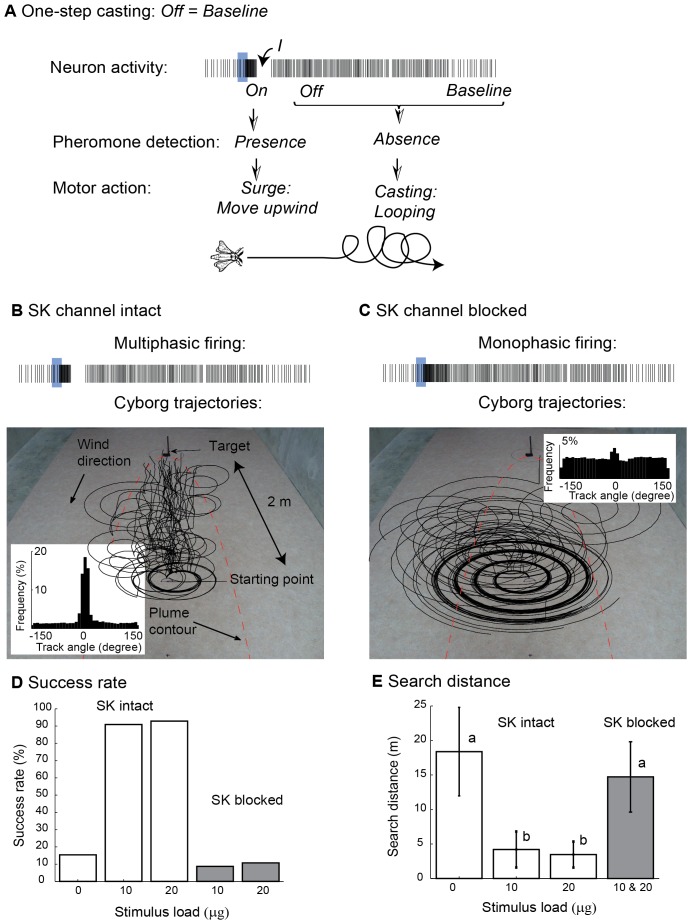Figure 5. One-step casting.
(A) In one-step casting, Off and baseline activities provide information about the absence of the stimulus and trigger the same casting behaviour: Off, baseline → spiraling. (B) Trajectories of the cyborg controlled by the On/Off neuron model with SK channel intact. The plume contour (red line) is defined as the parabolic region where 90% of all pheromone detections occurred. The target is the source of pheromone (dose = 10 µg). Inset: track angle histogram (p<0.001, Rayleigh circular test of non-uniformity). Track angles were computed as movement vectors with respect to the wind direction. A peak at 0° indicates a tendency to move upwind, as compared to movements perpendicular to the wind direction (±90°). (C) Trajectories with SK channel blocked. Inset: track angle histogram (p = 0.6, Rayleigh circular test of non-uniformity). Same experimental conditions as in panel B. (D) Success rate measured as the percentage of successful trials in the different conditions (SK channel intact and blocked, pheromone dose = 10 and 20 µg; the dose 0 µg stands for no pheromone). (E) Search distance measured from the initial location to the target for all successful trajectories. Conditions having no letters in common are significantly different at p<0.05 (Mann-Whitney pairwise comparisons).

